Model life cycles - Page two
AWA Radiolas of the early 1950's
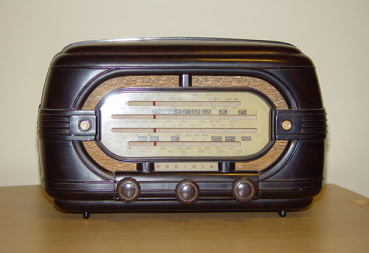
The receivers pictured here were among the last of the bakelite radios made by AWA, infact anyone. After this, coloured sets made of thermoplastics became common.
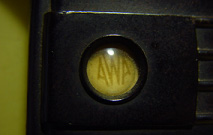
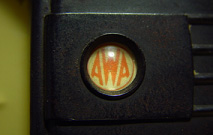
Note: These photos highlight the two small badges which adorn each end of the tuning dial. The earlier set, probably around 1950/51 has brown lettering while the later model, probably 1952, has red lettering. These badges are illuminated by the dial lamps when the set is on.
The later model has a valve lineup which includes one of the baseless nine pin valves which became commonly used from 1952 onwards. Before this, radio receivers used the bakelite based 'octal' valves. Both of these sets have dials showing only stations in New South Wales and Queensland. I'd happily swap the later model for a set which has the stations from other states. Both these sets work well though one has a crack in the top of the cabinet.
Lumpy Astor Mickeys
You'll see what I mean about lumps in a sec. They arn't lumps as such but I cannot think of another name for them. I own two late 1940's Astor Mickeys. A white one which appears to be younger than the green one I also have. The green one has a glass dial and the white one has an ornate plastic one and yes it does have a crack in it. The heat of the valves and dial lamps was never kind to thermoplastics or nitro-cellulose which was the thin pearled material often used during the 1930's for dial backgrounds.
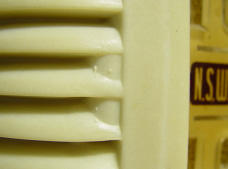
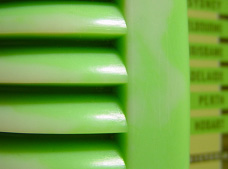
NOTE: The funny looking additional formation of bakelite near the dial seems to have no purpose. After an inspection of the innards, only the dial lamps are in the immediate vicinity, which is the case in the green set anyway.
The white set was acquired from an antique shop in Concord, NSW, while the green set was a gift, in exchange for some electrical work I did for a chap in Tamworth, NSW. I have restored the white set though the green set is awaiting its turn at the 'laying on of hands'. Coloured Astor Mickeys can fetch high prices in antique shops because they are rare. The most common colour would be the standard mottled brown.
Inside these two sets, once again the changes go further than skin-deep. Originally the 100mm loudspeaker was mounted on the port side and the sound came through slots in the side of the set, no visible unless you looked hard enough. Later when plastic dials came into vogue the speaker was shifted to the front, mounted behind the dial in a similar way to the Radiolas featured above.
Which page would you like to go to?
1|2

Sign In

Vintage Radio and Television is proudly brought to you by an era where things were built with pride and made to last.
DISCLAIMER: Valve radios and televisions contain voltages that can deliver lethal shocks. You should not attempt to work on a valve radio or other electrical appliances unless you know exactly what you are doing and have gained some experience with electronics and working around high voltages. The owner, administrators and staff of Vintage Radio & Television will accept no liability for any damage, injury or loss of life that comes as a result of your use or mis-use of information on this website. Please read our Safety Warning before using this website.
WARNING: Under no circumstances should you ever apply power to a vintage radio, television or other electrical appliance you have acquired without first having it checked and serviced by an experienced person. Also, at no time should any appliance be connected to an electricity supply if the power cord is damaged. If in doubt, do not apply power.
Shintara - Keepin' It Real · VileSilencer - Maintain The Rage
